7 Essential Facts About Serrano Peppers That Add Bold Flavor to Every Bite
Serrano peppers are a bold and flavorful way to bring heat to your favorite dishes. These slender green chilies offer a sharp, clean bite that’s spicier than jalapeños but just as versatile. From fresh salsas to stir-fries, they’re a favorite ingredient in Mexican and Southwestern cooking.
In this guide, you’ll discover what makes them unique. We’ll break down their heat level, how they compare to other peppers, and the best ways to use, store, and cook them. Whether you’re exploring new ingredients or just love a good kick of spice, this is your go-to resource.
Table of Contents
What Are Serrano Peppers?
Serrano peppers are small, thin chilies known for their sharp heat and fresh, grassy flavor. They typically grow to about two to four inches in length and are slightly curved, with a smooth, glossy surface. Most commonly harvested when green, they can also ripen to vibrant shades of red, orange, or even brown depending on the variety and maturity.
Native to the mountainous regions of Puebla and Hidalgo in Mexico, serranos thrive in warm climates and are widely cultivated throughout Central America and the southern United States. Their name comes from the Spanish word “sierra,” meaning mountain, which reflects their origin.
Unlike larger chilies that tend to mellow as they grow, serranos keep their fiery punch throughout the ripening process. Their thin walls make them ideal for slicing into salsas, grilling whole, or chopping raw into dishes that need a kick of heat.
These peppers are especially popular in fresh applications where their crisp texture and bright flavor can really stand out. You’ll find them used in everything from pico de gallo to pickled pepper mixes, giving dishes a balanced burn and unmistakable zest.
Serrano Scoville Heat Explained
If you’re wondering how hot serrano peppers really are, the answer lies in something called the Scoville scale. This scale measures the spiciness of chili peppers based on their capsaicin content, which is the chemical compound that creates the burning sensation.
Serranos typically fall between 10,000 and 25,000 Scoville Heat Units (SHU). That puts them significantly hotter than jalapeños, which usually range from 2,500 to 8,000 SHU. At their peak, serranos can be up to three times hotter than jalapeños.
Not every pepper packs the same punch. Heat can vary depending on growing conditions, soil, weather, and how ripe the pepper is when picked. Red serranos, which are fully ripened, tend to be hotter than green ones.
Here’s a quick comparison to put things into perspective:
| Pepper | Scoville Heat Units (SHU) |
|---|---|
| Bell Pepper | 0 |
| Jalapeño | 2,500 to 8,000 |
| Serrano Pepper | 10,000 to 25,000 |
| Cayenne | 30,000 to 50,000 |
| Habanero | 100,000 to 350,000 |
What makes serranos unique is their balance of heat and flavor. They deliver a strong kick without losing their bright, fresh taste. This makes them ideal for adding depth to a dish without overpowering it.
If you’re sensitive to heat, remove the seeds and the white inner ribs before using. That’s where most of the capsaicin is found. If you enjoy a bolder flavor, leave them in or roast the peppers to bring out even more intensity.
Serrano vs Jalapeño – What’s the Difference?
At first glance, serrano peppers and jalapeños might look similar. They’re both green, moderately spicy, and common in salsas and sauces. But when you look closer, there are clear differences in flavor, heat, and how they’re used in the kitchen.
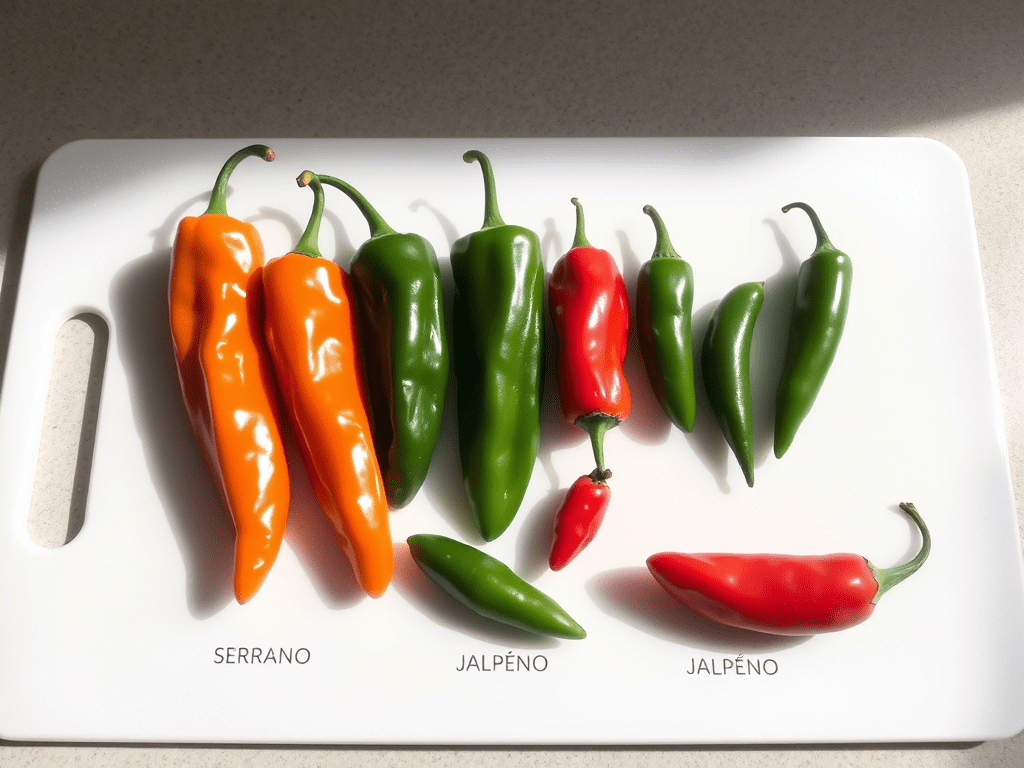
Heat Level
The biggest difference is heat. Serranos range from 10,000 to 25,000 Scoville units, while jalapeños fall between 2,500 and 8,000. This means serranos can be up to three times hotter, making them a better choice for recipes that need more kick.
Size and Shape
Serranos are usually slimmer and smaller, growing to about 2 to 4 inches long with a smooth surface. Jalapeños tend to be wider and shorter with thicker walls, which makes them ideal for stuffing or slicing into rings.
Flavor Profile
Serranos have a brighter, more concentrated flavor with grassy undertones. Jalapeños are milder and slightly sweeter, especially when cooked. Serranos shine in fresh applications, while jalapeños are often grilled or roasted.
Texture and Cooking Uses
Serranos have thinner skins and a crisper bite. They’re perfect for raw salsas, spicy garnishes, or blending into sauces. Jalapeños hold up better to baking or grilling and are often used in stuffed pepper dishes.
Color and Ripeness
Both peppers start green and can turn red or orange when fully ripe. Red serranos tend to be hotter, while red jalapeños are often used to make chipotle after they are smoked and dried.
Summary Table
| Feature | Serrano Pepper | Jalapeño Pepper |
|---|---|---|
| Heat Level | 10,000 to 25,000 SHU | 2,500 to 8,000 SHU |
| Size | 2 to 4 inches, slender | 2 to 3 inches, thicker |
| Skin | Thin, smooth | Thicker, slightly waxy |
| Best Use | Raw salsas, sauces, garnish | Stuffing, grilling, pickling |
| Flavor | Bright, grassy, spicy | Mild, slightly sweet |
Whether you’re choosing based on flavor or fire, knowing the difference between serrano vs jalapeño helps you pick the right chili for your recipe.
Are Serrano Peppers Hotter Than Jalapeños?
A common question people ask when cooking with chili peppers is: are serrano peppers hotter than jalapeno? The short answer is yes, and the difference can definitely be felt.
On the Scoville scale, which measures the heat of chili peppers, the serrano scoville rating ranges between 10,000 and 25,000 SHU, while jalapeños range from 2,500 to 8,000 SHU. This means a serrano can be up to three times hotter than a jalapeño, depending on its ripeness and growing conditions.
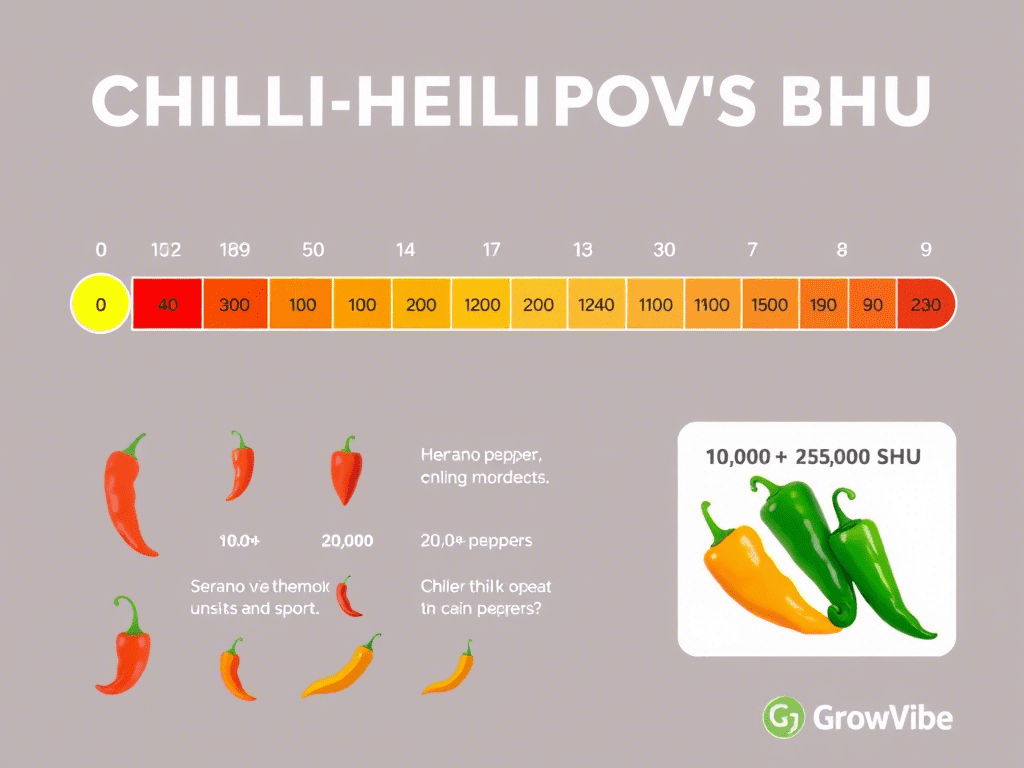
Here’s a quick side-by-side comparison:
| Pepper | Scoville Heat Units (SHU) |
|---|---|
| Jalapeño Pepper | 2,500 to 8,000 |
| Serrano Pepper | 10,000 to 25,000 |
Why the Heat Difference?
The difference in the serrano vs jalapeño heat level comes down to how much capsaicin each one contains. Serranos naturally have more capsaicin, which creates that sharp, lingering heat.
The texture matters too. When comparing serrano pepper vs jalapeño pepper, serranos are thinner and have a tighter structure. That gives them a stronger flavor and a more concentrated burst of heat in each bite.
How to Handle the Heat
If you’re not used to spicy food, start by using small amounts of serrano, and remove the seeds and white ribs to lower the intensity. On the other hand, if you’re looking for that fire, go ahead and use them raw, grilled, or blended into sauces.
So, are serrano peppers hotter than jalapeños? Absolutely. And that’s what makes them such a favorite for adding serious heat and flavor in just a few slices.
Best Serrano Pepper Recipes to Try
Serrano peppers aren’t just about heat. They bring a crisp, bright flavor that adds depth to all kinds of dishes. Whether you’re cooking with meat, making vegetarian meals, or preparing bold appetizers, there are plenty of ways to use them.
Here are some of the best serrano pepper recipes to try in your kitchen.
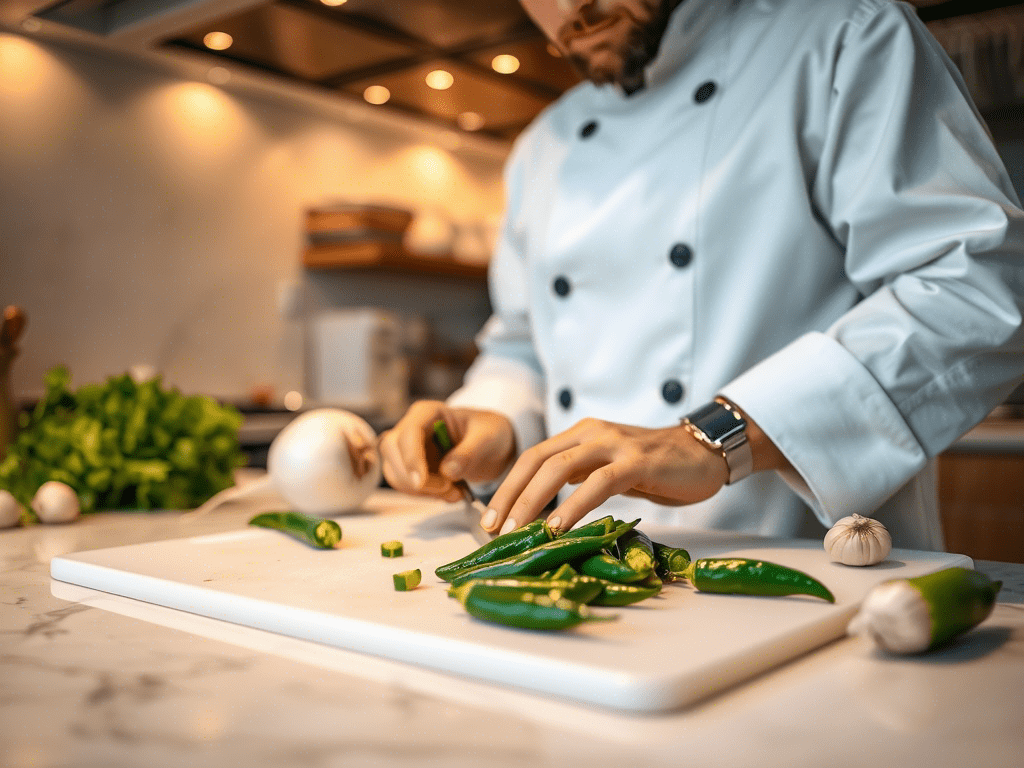
1. Fresh Serrano Salsa
This is one of the easiest and most flavorful ways to use serranos. Blend them with fresh tomatoes, garlic, onion, lime juice, and cilantro for a classic salsa with serious heat. It’s perfect for tacos, grilled meats, or as a chip dip.
Tip: Roast the peppers first for a smoky twist.
2. Pickled Serranos
Pickled serrano slices are great for topping nachos, sandwiches, and tacos. They add tang, crunch, and a spicy kick. Just slice the peppers and soak them in a mixture of vinegar, garlic, sugar, and salt.
They store well in the fridge and taste even better after a few days.
3. Serrano Hot Sauce
For those who like their condiments fiery, homemade hot sauce is a must. Blend serranos with vinegar, garlic, onions, and a bit of sugar to balance the flavor. You can keep it simple or add herbs like oregano or thyme.
Use it on eggs, burgers, or anywhere you’d add heat.
4. Spicy Stir-Fried Vegetables
Add sliced serrano peppers to your favorite stir-fry. They pair especially well with bell peppers, onions, and carrots. A little soy sauce and ginger make this an easy, flavorful dish with just the right amount of heat.
5. Grilled Chicken with Serrano Marinade
Blend serranos with olive oil, garlic, lime juice, and cilantro for a spicy marinade. It works beautifully on chicken, shrimp, or tofu. Grill until slightly charred and serve with rice or roasted veggies.
6. Creamy Serrano Dip
Mix chopped serranos into a creamy base of sour cream and mayonnaise with lime and garlic. This dip is fantastic for chips, roasted potatoes, or even as a spread on wraps and burgers.
7. Spicy Cucumber Salad
Toss thinly sliced cucumbers with vinegar, a pinch of sugar, and fresh sliced serranos. This simple, cooling salad delivers crunch and heat at the same time.
Whether you’re making a sauce, a side, or a main dish, these recipes show how versatile serrano peppers can be. Their heat and fresh flavor make them a star ingredient in so many kitchens.
How to Cook with Serrano Peppers
Knowing how to cook with serrano peppers is the key to unlocking their full potential. Whether you’re using them raw, roasted, or blended, these chilies can bring vibrant heat and flavor to almost any dish.
Raw for Fresh Heat
Serranos have a crisp texture and sharp bite when raw. They’re perfect for adding a fiery punch to:
- Salsas and pico de gallo
- Ceviche or seafood salads
- Toppings for tacos or rice bowls
Slice them thinly or mince them finely to spread the heat evenly.
Roasting and Grilling
Cooking serranos over high heat mellows their sharpness and brings out a smoky sweetness. Try:
- Charring them directly over a gas flame or grill
- Roasting in the oven at 400°F until blistered
- Adding them to roasted vegetable trays for extra spice
Once roasted, you can blend them into sauces, dips, or marinades.
Sautéing or Stir-Frying
Add sliced or chopped serranos to hot oil for a quick burst of heat. This method infuses your dishes with chili flavor while softening the texture.
They work great in:
- Stir-fried noodles or vegetables
- Rice dishes like fried rice or paella
- Savory scrambled eggs or breakfast hash
Fermenting for Hot Sauce
For more complex flavor, try fermenting serranos with garlic and salt for a few days before blending into a homemade hot sauce. It’s tangy, fiery, and perfect for spice lovers.
Pairing with Other Ingredients
Serranos pair especially well with:
- Fresh herbs like cilantro and mint
- Acidic elements like lime juice and vinegar
- Dairy (sour cream, cheese, or yogurt) to tame the heat
- Proteins like chicken, shrimp, or tofu
Whether you want to go big on spice or just add a hint of heat, serrano peppers give you full control. Adjust the quantity, remove seeds for less heat, or use them whole for a stronger kick.
Storing and Preserving Serrano Peppers
Keeping your serrano peppers fresh and flavorful is easy when you know the right storage methods. Whether you’re using them within a few days or saving them for later, there are several ways to make them last.
Short-Term Storage (Refrigerator)
Fresh serranos can be stored in the crisper drawer of your fridge.
Tips:
- Keep them unwashed in a breathable produce bag or paper towel
- Store in the vegetable drawer where humidity is higher
- Use within 7 to 10 days for best flavor and texture
Avoid airtight plastic bags, which can trap moisture and cause spoilage.
Freezing for Long-Term Use
If you have a big batch or want to save extras for cooking later, freezing is a great option.
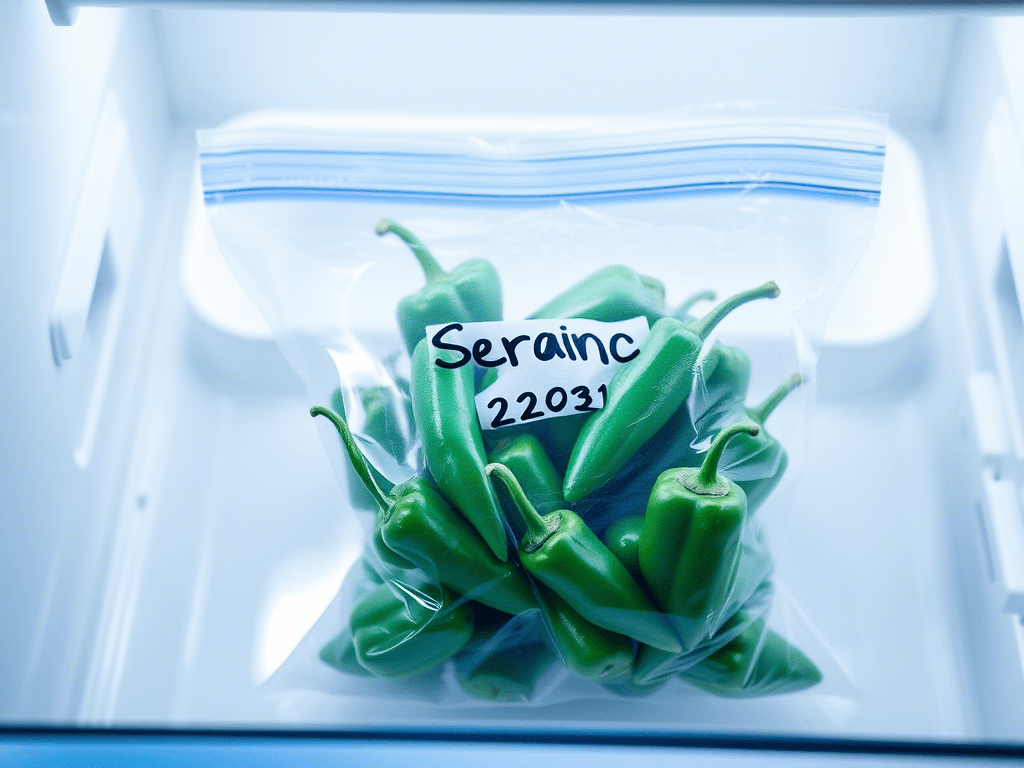
How to freeze:
- Wash and dry the peppers completely
- Remove stems if preferred
- Place in a single layer on a tray and freeze
- Transfer to a freezer bag or airtight container once solid
Frozen serranos will last up to 6 months and can be used straight from the freezer in cooked recipes.
Pickling
Pickled serrano peppers are great for sandwiches, tacos, burgers, or adding to salads.
Basic method:
- Slice the peppers
- Bring vinegar, water, sugar, and salt to a boil
- Pour over the peppers in a jar
- Let cool and refrigerate
They’ll keep in the fridge for up to 2 months and get more flavorful with time.
Drying or Dehydrating
Drying peppers helps preserve them for long storage and creates a whole new flavor profile.
Options:
- Use a food dehydrator for even drying
- Dry in the oven at a low temperature (around 170°F)
- Hang whole peppers in a dry, ventilated space
Once dry, you can grind them into chili flakes or rehydrate in soups and sauces.
Can You Substitute Serrano Peppers?
Sometimes you can’t find serrano peppers at your local store, or maybe you want to tone down the heat. The good news is that there are several substitutions that can work if you know what you’re looking for in terms of flavor and intensity.
Jalapeños: The Closest Substitute
If you’re cooking a dish that calls for serranos, jalapeños are often the easiest swap. In the serrano vs jalapeno comparison, jalapeños are milder, with a Scoville rating between 2,500 and 8,000 SHU. They’re great for people who want the flavor with a little less heat.
Just keep in mind:
- You may need more jalapeño to match the heat of a serrano
- The texture is slightly thicker, so it may cook a bit differently in sauces
Fresno Peppers
Fresno peppers look similar to jalapeños but have a slightly sweeter and more vibrant flavor. They make a great replacement in serrano pepper recipes that call for fresh chili heat and color, such as salsa or homemade hot sauce.
They also work well roasted or blended into dips.
Thai Chilies
If you want something hotter than serranos, Thai chilies bring serious fire. Use them in small amounts, especially in stir-fries or sauces. They aren’t a one-to-one match, but they work if you’re seeking bold spice.
Cayenne or Crushed Red Pepper
In cooked dishes like soups or stews, cayenne powder or red pepper flakes can mimic the heat level of serranos. These substitutes won’t give you the same fresh texture but still bring the heat.
When to Avoid Substitutes
Some recipes rely on the crisp texture and flavor of serranos. Raw dishes like pico de gallo, ceviche, or salads will taste noticeably different if you swap them out. In these cases, the serrano pepper vs jalapeno pepper difference really matters.
If you’re making a switch, always taste and adjust. Every pepper has its own level of heat, so start small and build up. With the right balance, your recipe can still turn out great.
Health Benefits of Serrano Peppers
Besides the bold flavor and fiery kick, serrano peppers come with a surprising list of health benefits. These small chilies are packed with nutrients, antioxidants, and compounds that do more than just spice up your favorite dishes.
Rich in Vitamins and Minerals
A single serrano pepper contains high levels of vitamin C, which supports the immune system and promotes healthy skin. They’re also a good source of vitamin A, vitamin B6, and potassium, which are important for energy, vision, and muscle function.
These nutrients are especially preserved when the peppers are eaten raw in dishes like fresh salsas, salads, and other serrano pepper recipes.
Natural Anti-Inflammatory Properties
Capsaicin, the compound that gives serrano peppers their heat, has been shown to have anti-inflammatory effects. It may help reduce swelling, ease joint pain, and support heart health when consumed in moderation.
That burning sensation you feel is capsaicin at work, increasing blood flow and triggering endorphin release.
Supports Metabolism and Weight Management
Spicy foods like serranos may give your metabolism a small boost by increasing thermogenesis, which is the process your body uses to burn calories. They can also help curb appetite, making them a useful ingredient in meals aimed at weight control.
Try adding chopped serrano to eggs, roasted vegetables, or soups for a flavorful and metabolism-friendly upgrade.
Antioxidant Boost
The vibrant color of serrano peppers is a sign of their high antioxidant content. Antioxidants help protect your cells from damage caused by free radicals and contribute to long-term health. Red, fully ripened serranos tend to contain even more antioxidant compounds.
Digestive and Circulatory Support
Capsaicin may stimulate digestive enzymes and improve gut health by reducing certain harmful bacteria. It can also promote better circulation and support healthy blood pressure when included regularly in meals.
A Hotter Choice with Added Perks
When comparing serrano vs jalapeno, serrano peppers are not only hotter but also offer slightly higher levels of capsaicin. If you’ve been wondering are serrano peppers hotter than jalapeno, the answer is yes. And with that extra heat may come added health benefits.
Whether you’re tossing them into salads or blending them into sauces, serrano peppers are a spicy ingredient that delivers flavor and function.
Common Mistakes When Using Serrano Peppers
Even though serrano peppers are easy to cook with, a few simple mistakes can ruin their flavor or make the heat overwhelming. If you’re just starting to explore serrano pepper recipes, keep these tips in mind to get the most out of each pepper.
1. Using Too Many at Once
Since serrano peppers are hotter than jalapeno, it’s easy to go overboard. If you’re used to cooking with jalapeños, start small with serranos. One or two can bring serious heat, especially in raw dishes like salsa or salad.
Overusing them can overpower the other flavors in your dish.
2. Not Removing the Seeds and Ribs
The seeds and white inner membranes of a pepper hold most of the heat. If you’re sensitive to spice, you should remove them before chopping. Even in cooked dishes, these parts can make the heat too intense.
For milder results in serrano pepper recipes, slice them open and clean them first.
3. Touching Your Face After Handling
This one catches a lot of beginners off guard. Always wash your hands well after chopping serrano peppers, or wear gloves if you’re working with a large amount.
Touching your eyes or face can cause serious irritation due to the capsaicin in the peppers.
4. Cooking Too Long on High Heat
While roasting or sautéing adds flavor, overcooking can flatten the pepper’s natural brightness. Serranos are best when cooked quickly over medium-high heat or added at the end of the cooking process to preserve their sharp taste.
5. Not Matching the Pepper to the Recipe
Understanding the difference between serrano vs jalapeno helps you choose the right pepper for the job. If a recipe calls for jalapeño and you swap in a serrano without adjusting the quantity, the result may be too spicy for some.
Always keep the serrano pepper vs jalapeno pepper heat difference in mind when substituting.
6. Skipping the Taste Test
No two peppers are exactly alike. Some serranos are mild while others pack a serious punch. Before adding them to a dish, taste a small slice. This helps you adjust seasoning and heat levels properly.
Avoiding these common mistakes can take your meals from good to amazing. Serrano peppers bring bold flavor and clean heat when used the right way, so take the time to prep and portion them properly.
FAQs About Serrano Peppers
Got questions about serrano peppers? Whether you’re new to cooking with them or just want to understand their heat and flavor better, this FAQ section covers the most common things people ask.
Are serrano peppers hotter than jalapeños?
Yes. Serrano peppers are hotter than jalapeno in almost every case. On the Scoville scale, serranos range from 10,000 to 25,000 SHU, while jalapeños only range from 2,500 to 8,000. That means serranos can be up to three times spicier depending on the pepper.
What is the Scoville rating of serrano peppers?
The serrano Scoville rating falls between 10,000 and 25,000 SHU. This puts them in the medium-hot range. They’re spicier than jalapeños but milder than cayenne or habanero peppers.
Can you eat serrano peppers raw?
Absolutely. Serranos are often eaten raw in salsas, salads, and fresh sauces. Their crisp texture and clean heat make them ideal for raw dishes. Many popular serrano pepper recipes call for them to be used uncooked.
Just remember that the heat is more intense when they’re raw compared to when they’re roasted or cooked.
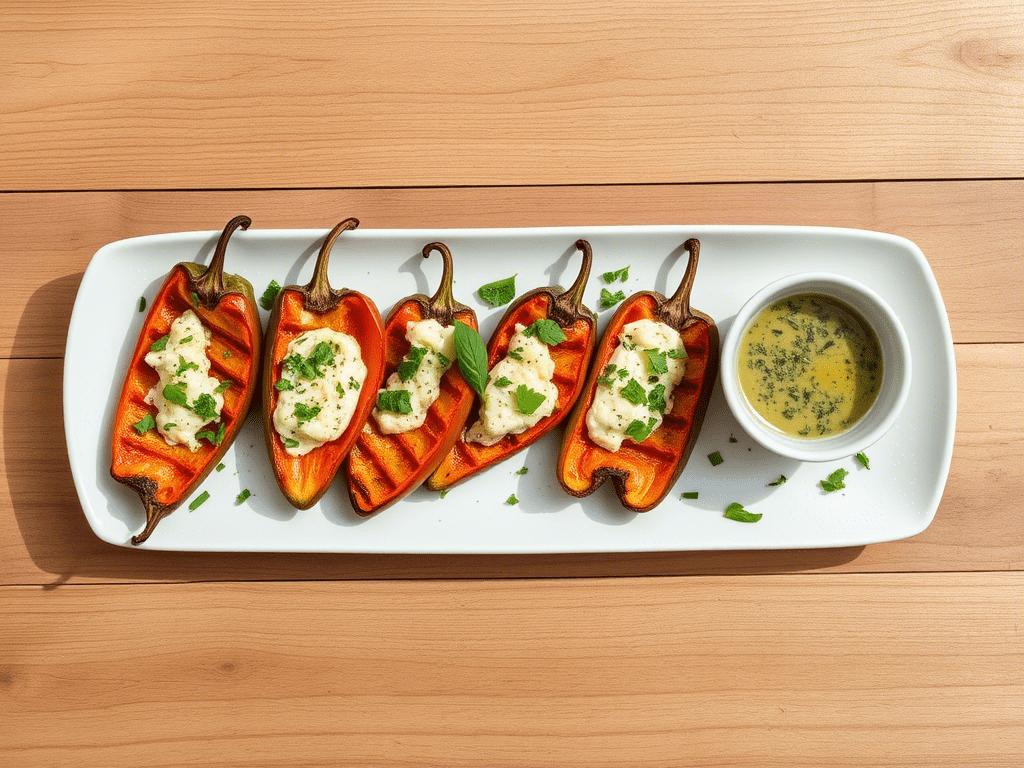
How do serrano peppers compare to jalapeños in flavor?
In the serrano pepper vs jalapeno pepper matchup, serranos are usually sharper and more intense in both heat and flavor. Jalapeños are milder and slightly sweeter, while serranos have a brighter, grassier taste. Both are great, but they’re used differently depending on the dish.
What are the best serrano pepper recipes to try?
Some of the most popular serrano pepper recipes include:
- Fresh serrano salsa
- Pickled serrano peppers
- Spicy cucumber salad
- Grilled marinades with serrano and lime
- Homemade hot sauce
They also go great in stir-fries, soups, and breakfast dishes like scrambled eggs or breakfast tacos.
Can you freeze serrano peppers?
Yes. You can freeze them whole, sliced, or even roasted. Just make sure they’re dry before freezing and store them in an airtight bag. Frozen serrano peppers can last for several months and still be great for cooking.
Do serranos get hotter when they turn red?
Usually, yes. As serranos ripen and change color from green to red, they often develop more capsaicin, which increases their heat. Red serranos also have a slightly sweeter, richer flavor, which is perfect for hot sauces and marinades.
Whether you’re cooking, preserving, or just experimenting with new ingredients, these answers should give you the confidence to use serrano peppers like a pro.
Final Thoughts, Internal Links, and Kitchen Tools
Serrano peppers bring bold flavor and balanced heat to every dish. Whether you’re slicing them into fresh salsa or adding spice to a sauce, these chilies make every bite memorable.
Ready to improve your kitchen experience? Check out these reader-favorite articles from GrowVibe:
Internal Links from GrowVibe.net:
Amazon Kitchen Tools
Here are three electric kitchen tools that pair perfectly with serrano pepper recipes. These affiliate links support GrowVibe at no extra cost to you.
- Cordless Electric Vegetable Corer (Electric Pepper Corer)
Perfect for effortlessly removing seeds from serrano or jalapeño peppers; reduces prep time and mess - Cosori 5-Tray Food Dehydrator
Excellent for drying serrano peppers into flakes or preserving herbs and snacks
Incorporating the right tools can make your pepper prep smoother and more efficient. Whether you’re roasting, pickling, or drying serrano peppers, these gadgets will help you get the most out of their heat and flavor. Enjoy experimenting and thanks for cooking with GrowVibe!



